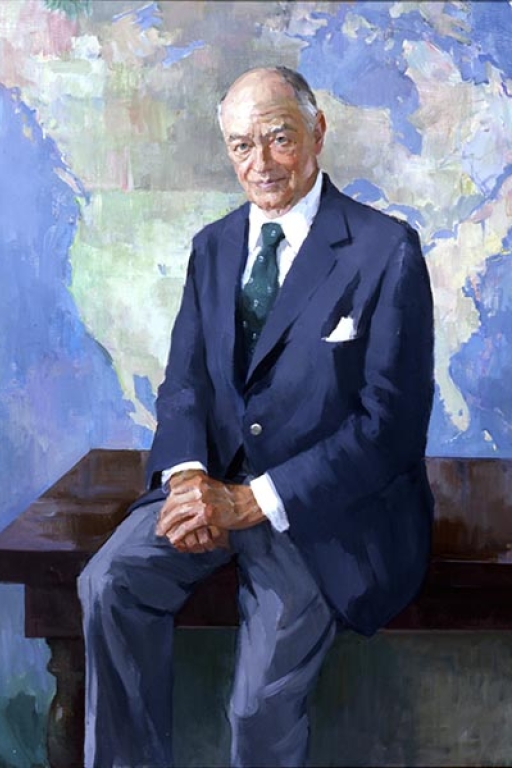
John Sloan Dickey
Appointments
President, 1945-1970
Biography
Regularly welcoming freshmen at Convocation with the phrase "your business here is learning," John Sloan Dickey was committed to making Dartmouth the best liberal arts college in the country. A graduate of Dartmouth (1929) and Harvard Law School, he had a varied career before assuming the presidency: partner at a major Boston law firm, special assistant to the Assistant Secretary of State and later to the Secretary of State, a member of the Office of Inter-American Affairs and the division of World Trade Intelligence, and Director of the State Department's Office of Public Affairs. Even after he assumed office in 1945 he was a principal actor in public policy, serving on President Truman's 1947 Committee on Civil Rights, the United Nations Collective Measures Committee in 1951, and as consultant to Secretary of State Acheson on disarmament.
John Sloan Dickey's commitment to the liberal arts, or, as he termed them "the liberating arts," was perhaps best expressed in an innovative course on "Great Issues," designed to introduce seniors to the problems of national and international relations they would face as citizens. President Dickey also reintroduced doctoral programs to Dartmouth, as well as a Northern Studies program and a Russian Civilization department. Dickey sought to expand the horizons of Dartmouth beyond Hanover and introduced foreign studies programs, a public affairs internship, and various social action programs. The William Jewett Tucker Foundation was opened by President Dickey, offering students opportunity and academic credit for social activism.
During his 25-year tenure, President Dickey headed two capital campaigns, doubled African American student enrollment, reinvigorated the Dartmouth Medical School, built the Hopkins Center and instituted continuing education for alumni. Consistent with his concern for awareness of and involvement in the great movements of the time, he saw the emerging importance of computers—a field then in its infancy—and built the Kiewit Computation Center in 1966. After stepping down as president, he continued his affiliation with the College by teaching Canadian-American relations as the Bicentennial Professor of Public Affairs.
PORTRAIT ARTIST & DONOR INFORMATION
Peter Michael Gish, John Sloan Dickey, 1981
Oil on canvas
Hood Museum of Art
Gift of an Anonymous Donor
Hood Museum Object Number: P.981.57